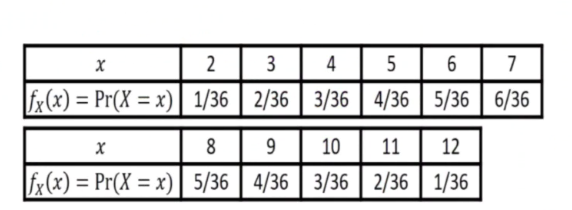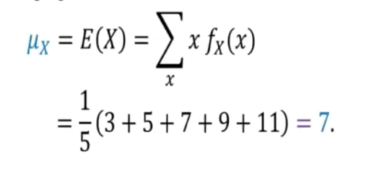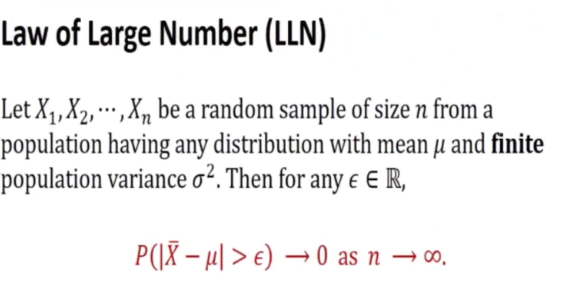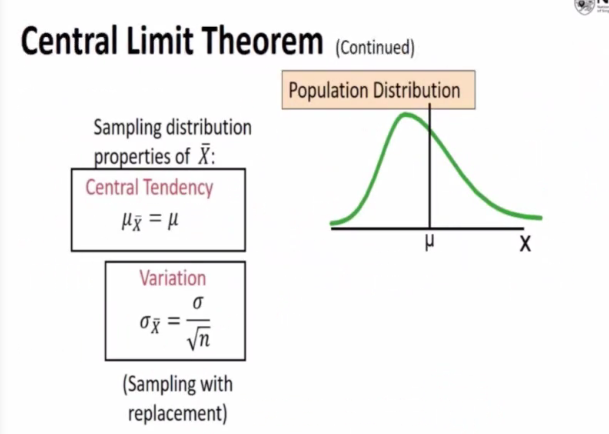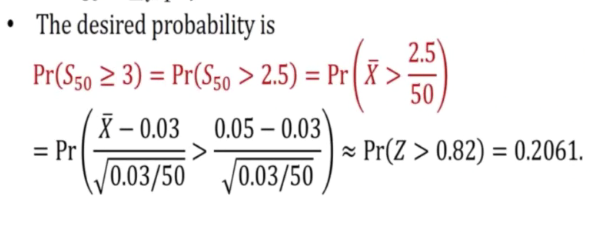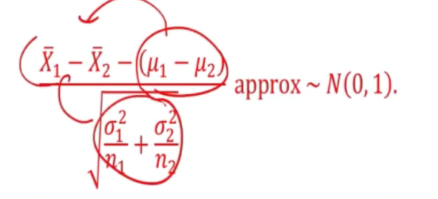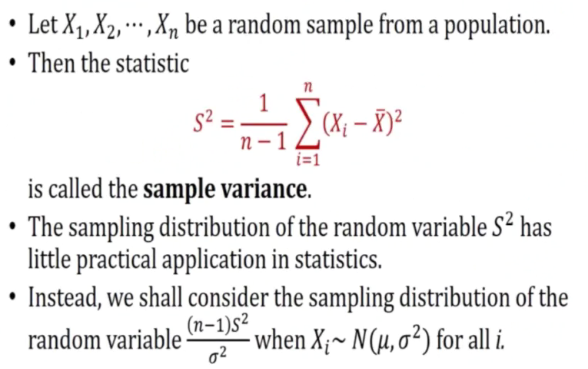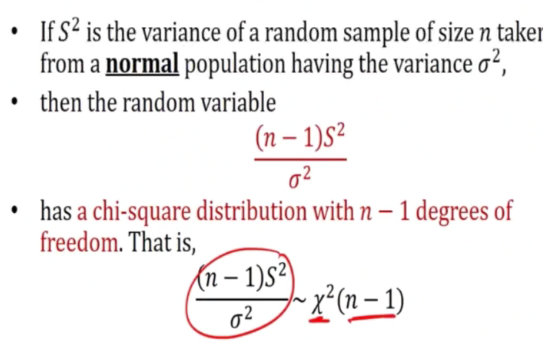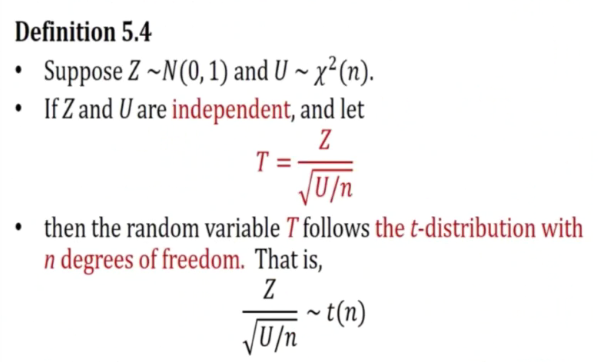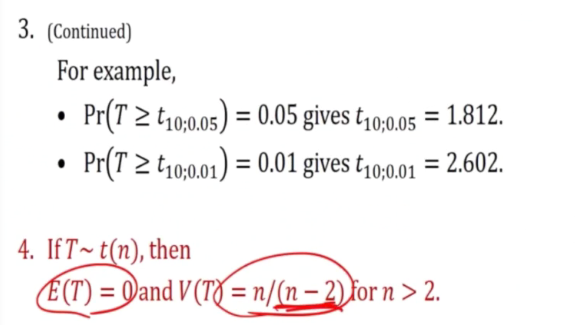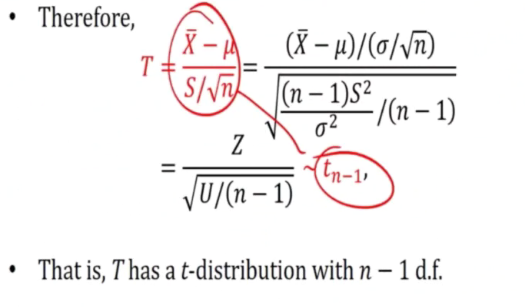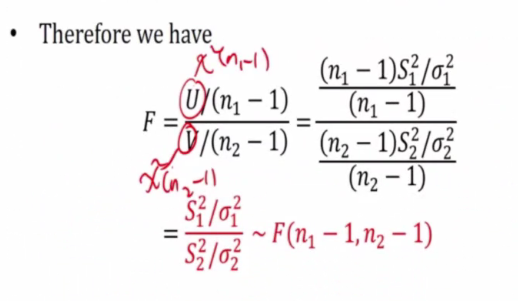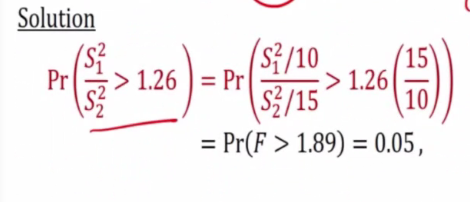Population and sample
How does each sample’s avg behaves? That is the sampling distribution
- The totality of possible outcomes or observation of a surve or experiment is populate
- Sample is a subset of population
- Every outcome or observation can be recorded as a numerical or categorical value. Thus each member of a population is a value of a random variable.
Finite population
- Finite number of elements
e.g
- All citizen of singapore
- All books in science library
Population is a collection of something that has a value and it can have more than one of these value.
Infinite Population
- Infinite is one that consists of an infinitely (Countable and uncountable) large number of elements.
e.g
- The results of all possible rolls of a pair of dice
- Random digits numbers taken with replacement from a sample space of 10 digits. like {0,1,2,3,4,5,6,7,8,9}
Although they are only 10 distinct integers, there can be a replacement, thus it is infinite
- The depths at all conceivable position of a lake
There is infinite number of points
Remark
Some infinite pop are so large that intheory we assume to be infinite such as the pop of lives of a certain type of storage battery.
Random Sampling
Simple random sample
- A set of n members takne from a given population is called a sample of size n
- A simple random sample of n members is a sample that is chosen in such a way that every subset of n observation of the population has the same prob of being selected
We want to select a sample of 3 from 1,2,3,4,5,6,7,8,9,10,11,12
We can select using 12C3 -> e.g {1,8,9}
Each of these are equally likely of being selected
Sampling from a finite population
- Sampling without replacement
- In general, there are NCn samples of size n that can be drawn from a finite population of size N without replacement
- Each sample has an equal chance of being selected
p(select) = 1/Ncn
- Sampling with replacement
- Using the population {A,B,C,D}, there are 4^2 = 16 samples of size 2
- There are N^n sample of size n that can be drawn from a finte pop of size N with replacement
Sampling from an infinite population (with or without)
- It wont affect the remaining if you take one out because it is infinite.
E.g 1
- 15 tosses of a coin with the hypothetical infinite population as the result
- If prob of getting heads is the same
- 15 tosses are independent
-> Therefore, the sample is random
Each of these values are independent and has an even distribution The joint distribution is equal to the product of the joint marginal for each values.
1) same prob of being selected 2) Independent
E.g 3
- Consider the pop of the sum of all possible rolls of a pair of dice
- the population is consider to be infinite
- We choose a random sample of size n from a random variable X having probability function given by
is infiite cos we can roll the dice many times
- To obtain a random size of size 100, we simply roll the pair of dice 100 times independently under the same conditons
- If xi represent the result on the ith roll, we then obtain x1,x2,x100
- All these are random variables with the same prob/same distribution as the population variable X
no matter is what roll, the outcome will follow the same distribution
Definition
- Let X be random variable with prob distribution
- Let x1,x2.. xn be n independent random variables each having the same distribution as X
- then x1,x2..xn is called a random sample of size n from a population with distribution fx(x)
Sampling distribution of sample mean
- Selecting random sample to elicit infomation about unknown population parameters
e.g we just toss a coin
fx(x) = p^x * (1-p) ^ (1-x) * x
We draw inference from a subset of a population
-
We want to know the proportion of people in singapore who prefer a certain brand of coffee
-
A large random sample is then selected from the population and the proportion of this sample favouring the brand of coffee in question is calculated
All these answer being correct or incorrect, they are all answer since we are selecting a random sample
Statistic and sampling distribution
- A function of a random sample is call statistic
A function is when we have one value mapped to another value
- A statistic is also called a random variable
- The prob distribution of a statstic is called a sampling distribution
Sample mean
This is the realisation of the statistic This happen wehen the values in the random sample is observed
E.g 1
- Consider a discrete uniform population
- 3,5,7,9,11
- Population N = 5
Hence, fx(X) = 1/5
- The population mean
Note: Mean is not the average, we must use the fomular
v(xspa) = v(x) / n
E(xpa) = e(x)
The variation of xpa is smaller than the variation of x. Because variance of xspa is v(x) * n. If n is a big number, then the varation of xspa is close to 0 compared to v(x)
Theorem
- FOr random samples of size n taken from infinite population or finite with replacement, having population mean (u)and population deviation(sigma)
Law of large number
The number is very big
-> Seems to tend to 0 when n is big
Remark:
- The sample size increase, the prob that the sample mean differes from the population mean tends to 0
Central Limit theorem and its application
Let x1, x2.. xn be random sample of size n from a population having any distribution with mean u and finite population variance sigma^2
The sampling distribution of the sample mean xspa is approximately normal with mean u and variance sigma^2/n if n is Sufficiently large
Taking a random sample of a million does not mean it will follow this normal distribution -> but that all the mean will follow the approximate normal
e.g If i select one million from a population and ask them a yes or no question. Each individual question be yes or no. How can it follow normal distribution? However, if we take the sample mean, all the xspa will follow the same normal distribution
Big sample size means that the sample mean follow a normal distribution
Theorem
- If given a bunch of x which follow N(u,sigma^2), then xspa is N(u,sigma^2/n) regardless of the sample size n
The sum of a1x1…anxn is a linear combination.
The whole expression is an random variable. What is the distribution for this random variable.
- Variance is sigma^2/n, this does not require the n to be large. If it is approximately normal, the Xspa is approximately normal as well. N(u,sigma^2/n) regardless of the sample size n
E.g 1
- Light bubl have a length of life that is approx normally distributed
- Mean equal to 800 hours
- SD 40 hrs
- Find prob of randomsample of 16 light bulbs will have an avg life of less than 775 hours
Xspa approx ~ N(800, 40^2/16)
Therefore,
It is symmetric about 0, therefore p(z<-0.5) = p(z>2.5). We do not need a graphic calculator
E.g 2
- Xspa denote the mean of random sample size 75
- Distribution with pdf:
fx(x) = 1 for 0<x<1
- What is xspa?
xspa ~N(E(x), V(x)/n)
- Find (0.45<xspa<0.55)
- It is known that E(X) = 1/2 and v(x) = 1/12
E(Xspa) = E(x)
V(xspa) = V(X) /n
E.g 3
- Random sample size 50 from possion distribution with para lamda = 0.03
- What is the prob that the sum of the sample will be at least 3 ie p(xspa>=3)
By the theorem, Xspa~N(E(x) , v(x)/n)
E(x) = 0.03 = V(x) due to poisson
Therefore,
Note: Continuity correction is used.
- If the sample size is very big, it does not really matter.
E.g 4
- Nicotine content mean= 0.8mg
- SD 0.1mg
- SOmeone smokes 5 packs (20 cigarettes) per week
-> 5 packs consist of 100 cigarettes -> Let xi denote the nicotine contents of the 100 cigarettes
Applying clt,
This is the same as asking if xspa is greater or equal to 0.82
Sampling distributions of difference of two sample means
What if we have x1spa and x2spa
Since x1spa and x2spa are approx normally distributed, therefore their differences are also approximately normally distributed.
E.g 1
Tv picture tubes of manufacturer A have a
- mean lifetime of 6.5 years
- sd of 0.9 years
Manu B have
- mean 6
- SD - 0.8
What is the prob that a random sample of 36 tubes from A have mean that is at least 1 year more than mean of sample 49 from B?
P(Xspa - Yspa >=1)
- Mean is 6.5 - 6 = 0.5
- SD = Sqrt((0.81/36) + (0.64/49))
We are not told what is the distribution, we only know the mean, That is why we will approximate the distribution to the normal distribution
Chi square distruution
Now we are talking about how sample variance behaves
This will follow the ~x^2(n-1) distribution.
This is the PDF for y:
- Y is defined to have a chi square distribution with n degress of freedom denoted by X^2(n) Where n is a positive integer and R(.) is the gamma function

t-distribution
Z is Xspa - u / (sigma/sqrt(n)) ~N(0,1)
The final is Xspa - u / (s/sqrt(n)) which is the t distribution
- This t distribution is consider as the ratio of 2 random variables, x and z.
Properties of t-distribution
- Resembles a graph of a sd distribution
- As n tend to infinite, it looks like normal distribution
E.g 1
- Light bubl burn on avg 500 hrs
- Test 25 bubls each month
- Computed t values falls between -t24;0.05 and t24;0.05
- What conclusion should be drawn from a sample that has a mean Xspa 518 hours and sd s = 40?
The chance that falls between t(24) and betwen -1.71 and 1.71, what is the probability that it falls within this area in the graph.
Assume that the distribution of burning times in hours is approx normal
- if u =500 then t = (518-u)/(40/5) = (519-500)/8 = 2.25 > 1.711
In this case, we do not believe what the manufacturer claim as u is > 500.
F-distribution
Let U and V be independent random variables having X^2(n1) and X^2(n2) respectively.
Definition
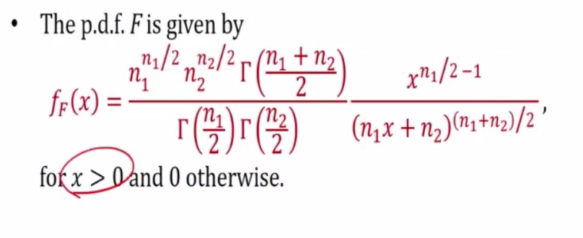
E.g 1
- Sppose random samples of size n1 and n2 are selected from 2 normal pop with varaince of sigma1 and sigma2 respectively
We are interested in finding if the 2 sample population have the same variance. Thus we will use this
Theorem
- If F~F(n,m) then 1/F ~ F(m.n)
We are just taking the reciprocol since it is a ratio. We need to swap the degrees of freedom
- The table gives the values of F(n1,n2;a) such that P(F>F(n1,n2;a)) = a
E.g
- F(5,4;0.05) = 6.26 means p(f>6.26) = 0.05 where f~F(5,4)
- F(4,5;0.025) = 7.39 means P(F>7.39) = 0.025 where F ~ F(4,5)
Theorem
- P(W>a) = 1 - alpha
- P(1/w < 1.a) = 1 - alpha
- P(1/w > 1.a) = alpha
E.g 2
- S1^2 and S2^2 be sample variances of independent sample of size n1 = 25 and n2 = 31
- Normal population with variance 10 and 15 respectively
- Find P(S1^2 / S2^2 > 1.26)
